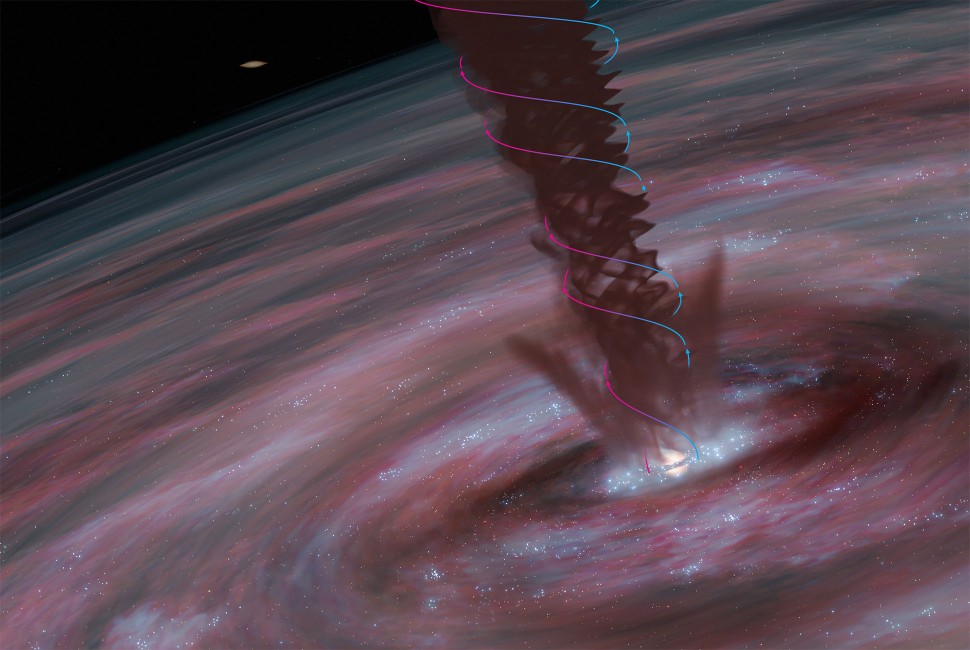Newly uncovered process is similar to how stars and planets are born

Illustration: A spiralling, dense wind could help scientists understand why supermassive black holes are as massive as they are. Credit: M. D. Gorski/Aaron M. Geller
By studying nearby galaxy ESO320-G030, a Northwestern University-led team of international astronomers has discovered extremely powerful rotating, magnetic winds help the galaxy’s central supermassive black hole grow.
The process is strikingly similar to the birth of new stars and planets, which are fed by swirls of gas and dust. The new discovery provides a previously unknown clue to solving the long-standing mystery of how supermassive black holes grow to weigh as much as millions or billions of stars.
“It is well-established that stars in the first stages of their evolution grow with the help of rotating winds — accelerated by magnetic fields, just like the wind in this galaxy,” said Northwestern’s Mark Gorski, who led the study. “Our observations show that supermassive black holes and tiny stars can grow by similar processes, but on very different scales.”
The study was published this spring in the journal Astronomy & Astrophysics.
An expert on the evolution of galaxies, Gorski is a postdoctoral fellow at Northwestern’s Center for Interdisciplinary and Exploratory Research in Astrophysics (CIERA). When the research began, Gorski was a postdoctoral researcher at Chalmers University of Technology in Sweden.
Continue to the full Northwestern news article.

